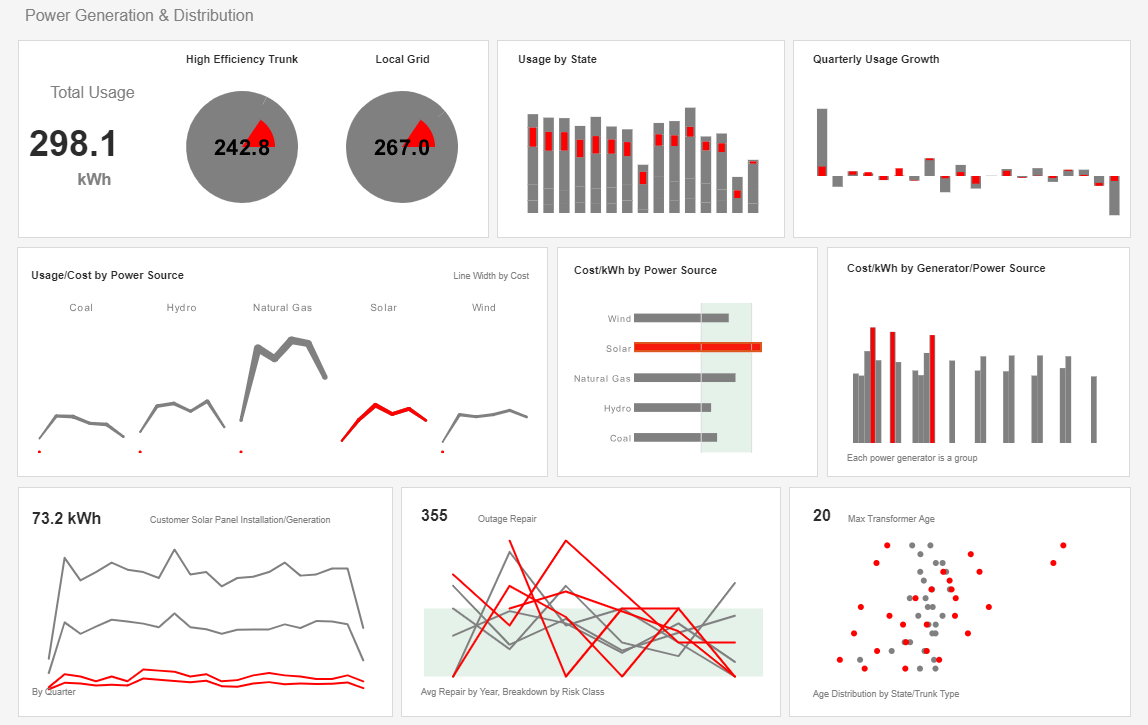Cloud Systems to Embed Insights
Below is the continuation of the transcript of a Webinar hosted by InetSoft on the topic of the Power of Data with Embedded Analytics Tools. The presenter is Abhishek Gupta, Chief Data Scientist at InetSoft.
This is important for these kinds of specialized cloud systems to embed insights. They are beginning to develop another kind of term of art out there as opposed to being just systems of record and business or transactional systems. They are certainly growing around business analytics and BI and so forth.
To build out these systems that different types of users can use, as we've been talking about here to make good use of data, to bring data in, to have data-driven decision-making, and to be able to collaborate on data. To use things like data storytelling to explain what they're seeing and maybe in a predictive trend that they can build predictions off of, and then make recommendations for different kinds of actions to improve processes or operations.
To be able to plug these in, use that kind of cloud development infrastructure I was talking about, is very valuable and important. Using open APIs, call the microservices, using standards instead of just specialized APIs or specialized connectors that use standards effectively can improve connectivity, enable easier data flow between them and allow for more customizable functionality.
| #1 Ranking: Read how InetSoft was rated #1 for user adoption in G2's user survey-based index | Read More |
Embedded BI for Third Party Developers
Through this way you can easily serve third party developers' customers' needs for expanding data interaction and increasing flexibility. Then also as I mentioned, different points in the workflows often become a frustration users have with embedded systems. It could invoke an embedded report maybe at one point, but they really need that capability at another point in the business process workflow. Can they provide it there?
This is another thing which is necessary: easier connectivity and customizable functionality enabling analytics to be contributing at different points in a workflow or in a business process. Not just for third party developers, I think there's an important point here is that because of the Cloud really and Cloud-based capabilities, it's no longer just the realm a third party developers, but organizations themselves can now look at how they can create applications and services for their customers, for their partners and for their employees to make it easier for everyone to interact, collaborating and be productive.
There's a lot of potential here, and this is where organizations are looking at the potential for things like monetizing data and analytics, which is really around productizing data flows or productizing certain kinds of analytics for external partners or customers or consumers. But I think it's important to make the point that you can take that same idea and think about how different employees in the organization, particularly, in larger organizations have different types of employees might be served by a similar idea.
 |
View a 2-minute demonstration of InetSoft's easy, agile, and robust BI software. |
Cost of Advanced Analytic Systems
The cost of those advanced analytic systems and who pays for it can be worked out actually in an economic way as well, but we won't get into that here. But there's obviously a lot of options there in terms of how an organization might productize it for internal employees or different subsidiaries around, and how it gets paid for it. It's compelling to be able to use some of these economic models that work on the outside to be able to use the money inside as well.
But, in general what I'm just talking about here is that they can use the same idea of trying to figure it out, innovate by productizing data analytics for these different kinds of either external, internal users. Again, keeping in mind of the three things that are important, one is governance, this way, the importance of being able to build them according to internal governance and data management standards.
I think the use of a standardized API's connectivity and so forth is a big part of that because then you can begin to plug-in knowledge of the data through data catalogs, being able to understand data lineage, be able to track that across vast use of embedded systems.
Learn how InetSoft's data intelligence technology is central to delivering efficient business intelligence. |
Embedding analytics and data access for customers, employees, just to think of some examples here, so these are examples of where they could be monetized. We see this in our research, most of these are actually drawn from best practice reports that we've seen. Financial services, embedded client dashboards, this is something that is very helpful in financial services.
| Previous: Building New Cloud BI Applications |



